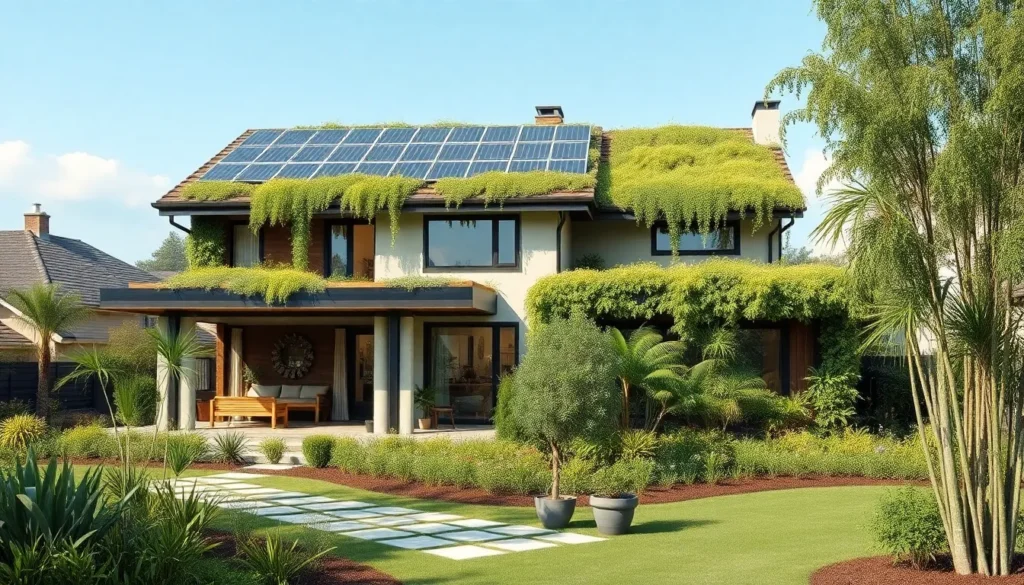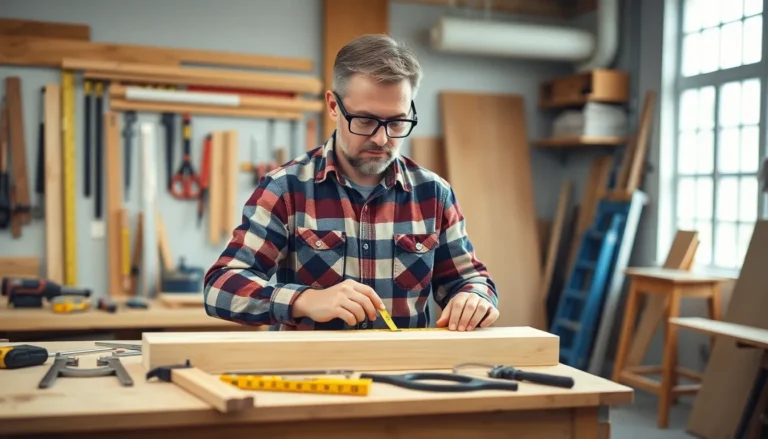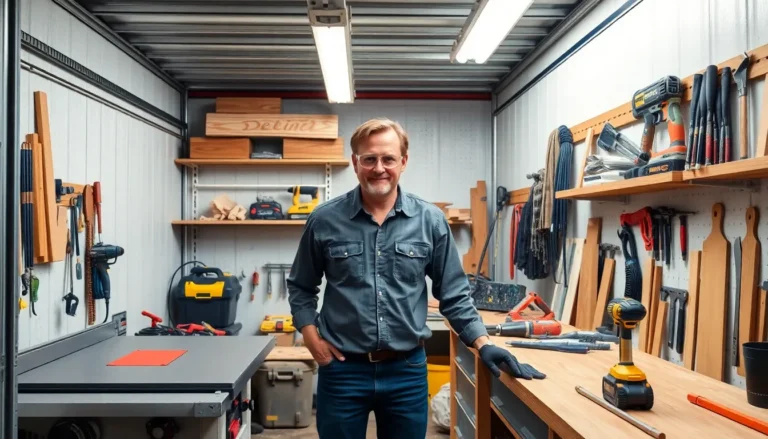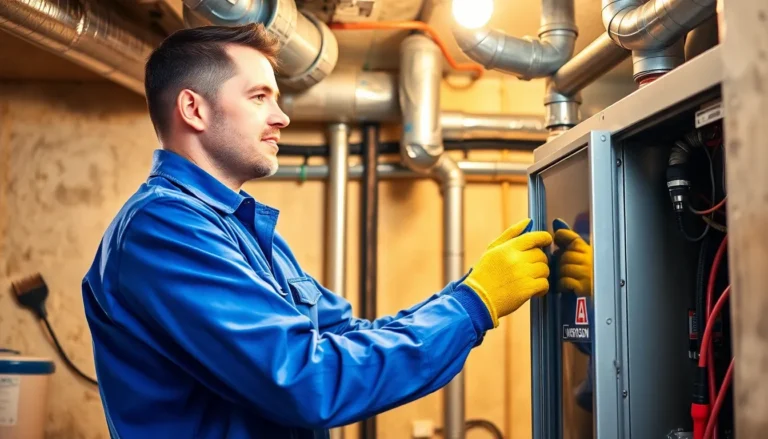Table of Contents
ToggleAs the world grapples with climate change and environmental degradation, the concept of sustainable homes has emerged as a beacon of hope. These innovative living spaces prioritize energy efficiency, resource conservation, and eco-friendly materials, allowing homeowners to reduce their carbon footprint while enjoying modern comforts.
Embracing sustainable living not only benefits the planet but also enhances quality of life. From solar panels to rainwater harvesting systems, sustainable homes are designed with both functionality and environmental responsibility in mind. As more people recognize the importance of eco-conscious choices, the demand for sustainable housing continues to rise, paving the way for a greener future.
Overview of Sustainable Homes
Sustainable homes represent a vital response to climate change and environmental degradation. These dwellings prioritize energy efficiency, resource conservation, and eco-friendly materials, allowing homeowners to reduce their carbon footprint while enjoying modern comforts. Key features often include solar panels, energy-efficient appliances, and rainwater harvesting systems.
Many designs incorporate passive solar heating and natural ventilation, reducing energy consumption. Sustainable homes often utilize sustainable building materials such as bamboo, reclaimed wood, and recycled steel. These materials not only minimize environmental impact but also improve indoor air quality.
Innovative technologies further enhance sustainability. Smart home systems enable homeowners to monitor and manage energy use effectively. Additionally, green roofs and living walls provide insulation and promote biodiversity.
The demand for sustainable housing continues to grow, driven by rising environmental awareness and a desire for healthier living spaces. Sustainable living improves overall quality of life, creating homes that are not only responsive to environmental concerns but also promote well-being. By adopting sustainable practices, homeowners actively contribute to a greener future.
Benefits of Sustainable Homes
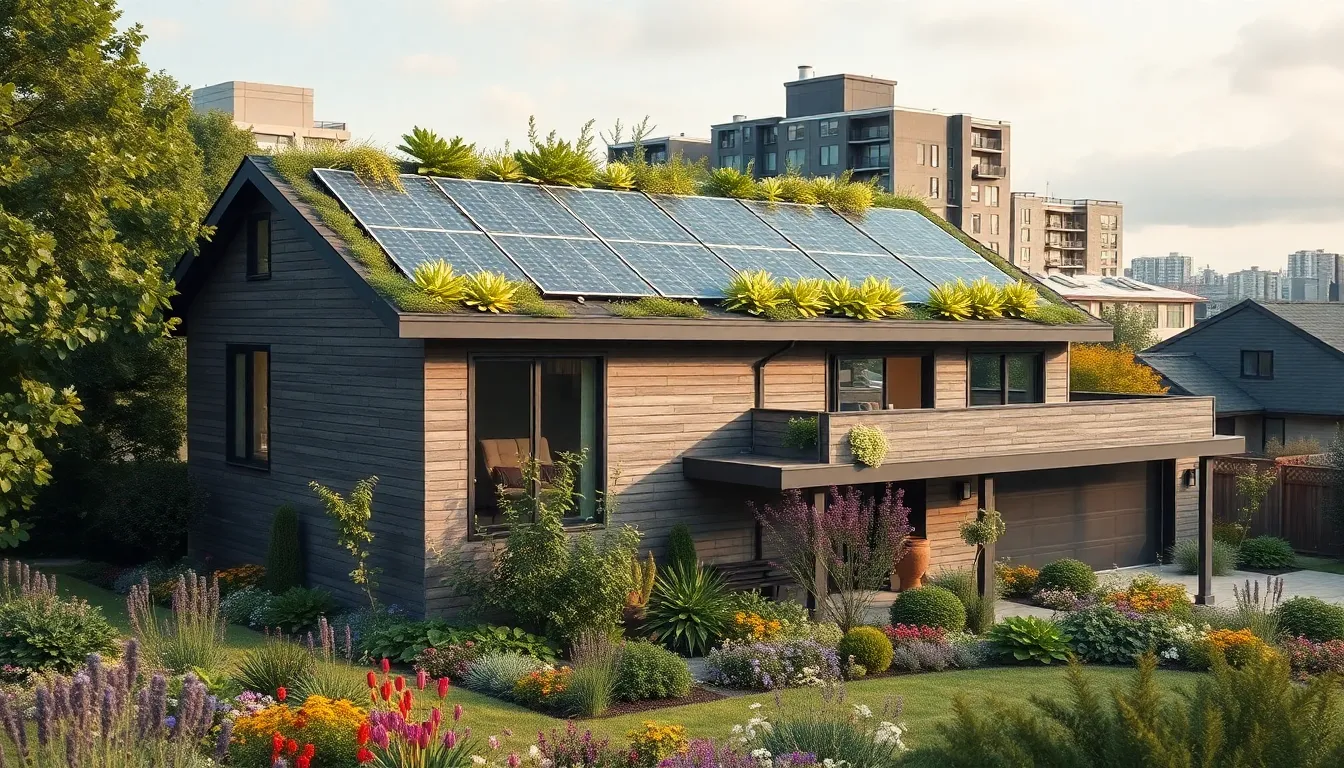
Sustainable homes offer numerous benefits that encompass environmental impact and economic advantages. These benefits extend beyond individual homeowners to society as a whole.
Environmental Impact
Sustainable homes significantly reduce carbon footprints through energy-efficient designs and renewable energy sources. They often feature solar panels, which can decrease reliance on fossil fuels. Energy-efficient appliances lower electricity consumption, thus conserving resources. Additionally, water conservation systems, like rainwater harvesting, reduce strain on municipal water supplies. Sustainable homes utilize eco-friendly materials that can produce fewer emissions during production, such as bamboo and recycled steel. Moreover, features like green roofs and living walls enhance biodiversity while providing insulation.
Economic Advantages
Sustainable homes yield long-term financial savings for homeowners. Lower energy consumption translates to reduced utility bills, which can enhance affordability. Many states offer tax incentives and rebates for using renewable energy sources and energy-efficient technologies, further lowering initial costs. Maintenance costs often decrease because sustainable materials typically possess greater durability. Additionally, sustainable homes can increase property values, as the market trend favors eco-friendly options. Investing in sustainable features offers a strong return on investment while promoting a greener economy.
Key Features of Sustainable Homes
Sustainable homes incorporate design and technology that prioritize environmental responsibility. Key features include energy efficiency and the use of sustainable materials.
Energy Efficiency
Energy-efficient homes use advanced insulation, high-performance windows, and energy-efficient appliances. These features minimize energy consumption, lowering utility expenses and reducing overall environmental impact. Smart thermostats and lighting systems allow homeowners to manage energy use efficiently, aligning daily habits with sustainable practices. Additionally, solar panels generate renewable energy onsite, further decreasing reliance on non-renewable resources and promoting self-sufficiency.
Sustainable Materials
Sustainable homes utilize environmentally friendly materials such as bamboo, reclaimed wood, and recycled steel. These materials come from renewable sources and have a lower impact on natural ecosystems. Utilizing such materials enhances indoor air quality by reducing toxins commonly found in conventional building products. Sustainable homes often feature non-toxic paints and finishes, improving health for residents. Furthermore, the durability of these materials ensures longevity, reducing the need for frequent replacements and minimizing waste over time.
Popular Sustainable Home Designs
Sustainable home designs prioritize energy efficiency, resource conservation, and eco-friendly materials, providing homeowners with environmentally conscious options. Here are some popular designs commonly utilized in sustainable homes:
- Passive Solar Design: This approach maximizes natural sunlight for heating and lighting. Large south-facing windows capture solar energy, while thermal mass materials, like concrete or stone, store and release heat.
- Net-Zero Energy Homes: These homes generate as much energy as they consume, often through renewable sources such as solar panels. In addition, they utilize high-performance insulation and energy-efficient appliances.
- Green Roofs: This design incorporates vegetation on rooftops, providing insulation, reducing stormwater runoff, and promoting biodiversity. Green roofs enhance aesthetic appeal while contributing to energy savings.
- Open Floor Plans: Open layouts improve airflow and natural lighting, decreasing the need for artificial lighting and enhancing indoor air quality. This design often features energy-efficient windows and doors for better ventilation.
- Earth-Sheltered Homes: Built into hillsides or depressions, these homes utilize natural earth insulation, maintaining consistent indoor temperatures year-round. They minimize exposure to harsh weather conditions and reduce heating and cooling costs.
- Modular and Prefabricated Homes: Constructed off-site in controlled environments, these homes often use sustainable materials and result in less wasted building resources. They can be customized for energy efficiency and eco-friendly features.
- Tiny Homes: Focused on minimalism, these compact living spaces reduce the overall resource consumption and carbon footprint. Many include renewable energy systems and sustainable materials, emphasizing efficient use of space and resources.
Each design choice not only reflects a commitment to sustainability but also enhances quality of life, making sustainable homes an attractive and responsible living option.
Challenges in Creating Sustainable Homes
Creating sustainable homes presents several challenges that homeowners and builders must navigate.
High Initial Costs
High initial costs deter many potential homeowners from embracing sustainable building practices. Sustainable materials, advanced technologies, and specialized designs often require more upfront investment compared to conventional options.
Limited Availability of Materials
Limited availability of sustainable materials impacts the feasibility of constructing eco-friendly homes. Regions may not have access to locally sourced, sustainable materials like bamboo or reclaimed wood, increasing transportation costs and carbon footprints.
Incomplete Knowledge Base
Incomplete knowledge about sustainable design can lead to ineffective implementations. Builders and homeowners may lack training or experience in utilizing sustainable techniques, risking poor performance and project failures.
Regulatory Barriers
Regulatory barriers complicate sustainable homebuilding efforts. Local zoning laws and building codes may not accommodate innovative approaches to design or construction, restricting the adoption of energy-efficient technologies.
Resistance to Change
Resistance to change contributes to slow adoption of sustainable practices. Many homeowners and builders stick to traditional methods, often influenced by familiarity and perceived risks associated with new technologies and materials.
Maintenance and Durability Concerns
Maintenance and durability concerns arise with certain sustainable materials. Some eco-friendly options may require more upkeep or have lower lifespans than traditional materials, creating hesitancy among potential adopters.
Energy Performance Variability
Energy performance variability creates challenges in ensuring consistent efficiency. Factors like climate, location, and design can significantly influence a home’s energy consumption, making it difficult to project savings accurately.
Integration of Technology
Integration of technology poses its own set of hurdles. Smart home systems require technical knowledge for installation and maintenance, which may not be readily available or accessible to all homeowners.
Addressing these challenges demands a multifaceted approach that combines education, advocacy, and collaboration among stakeholders in the sustainable building sector.
Embracing sustainable homes represents a significant step toward a healthier planet and improved quality of life. By integrating energy-efficient designs and eco-friendly materials, homeowners can create spaces that are not only comfortable but also environmentally responsible. The shift toward sustainability is more than just a trend; it’s a necessary evolution in how people live and interact with their surroundings.
As awareness grows and technology advances, the barriers to adopting sustainable practices will continue to diminish. Homeowners have the opportunity to lead the way in fostering a greener future while enjoying the economic benefits that come with energy efficiency. Ultimately, the commitment to sustainable living paves the path for a more resilient and sustainable economy.

